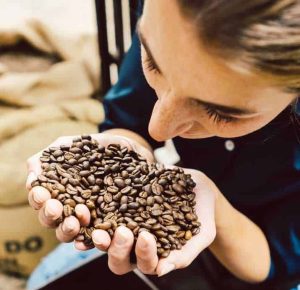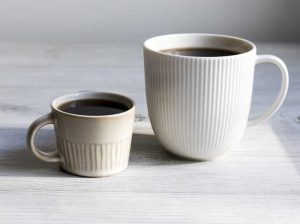How Many Ounces Are in a Cup of Coffee?
How Many Ounces Are in a Cup of Coffee
A standard cup of coffee is typically around 8 fluid ounces. However, the exact amount can vary depending on personal preferences, the type of cup used, and how the coffee is prepared. Some people might use larger cups or mugs that hold more fluid ounces, so it’s a good idea to check the specific capacity of the cup you’re using if you need precise measurements.
If you’re a coffee enthusiast, you might have come across the question, “How many ounces are in a cup of coffee?” It’s a fundamental question that often stirs up confusion, especially given the variety of cup sizes and brewing methods available. Whether you’re brewing your morning cup at home or ordering from a café, understanding the measurements can help you get the perfect coffee-to-water ratio for your preferred taste.
Understanding Fluid Ounces and Coffee Ounces
When discussing coffee measurements, it’s crucial to differentiate between fluid ounces and coffee ounces. Fluid ounces measure volume, while coffee ounces typically refer to the weight of coffee beans or grounds. The density of coffee beans can vary, affecting the number of coffee ounces needed to brew a flavorful cup. Discover more about Why Does My Pee Smell Like Coffee?
What Does the Ratio Signify?
The coffee-to-cup ratio refers to the amount of coffee grounds required to brew a single cup of coffee. It’s a crucial factor that determines the strength and flavor of your coffee. Getting this ratio right can make the difference between a weak, underwhelming cup and a robust, flavorful one.
Understanding Standard Measurements
Before we proceed, let’s establish some basic measurements:
- 1 Cup = 8 Fluid Ounces
- 1 Ounce of Coffee is Typically Used for Every 6 Ounces of Water
The Impact of Coffee-to-Water Ratio
The coffee-to-water ratio plays a vital role in determining the strength and flavor of your coffee. Generally, a standard ratio is around 1 to 15, meaning one part coffee to 15 parts water. However, this ratio can be adjusted to suit your preferences, from a milder brew to a more robust and concentrated cup.
Different Coffee Varieties and Their Ounce Equivalents
Various coffee styles, such as espresso, Americano, or pour-over, have different ounce equivalents due to their unique preparation methods. For example, an espresso shot is typically around 1 ounce, while an Americano might be 8 to 10 ounces, as it’s diluted with water. Coffee beans are usually measured by weight, while brewed coffee is measured by volume. To ensure accuracy, use a kitchen scale to measure your coffee beans before grinding, then use the appropriate coffee-to-water ratio during brewing.
Accurate measurements are the cornerstone of consistent coffee brewing. Too much or too little coffee can lead to over-extraction or under-extraction, resulting in a bitter or weak cup. Precision is key to unlocking the full potential of your coffee beans.
Tips for Consistent Coffee Brewing
Invest in a kitchen scale for precise measurements.
Use freshly ground beans for optimal flavor.
Maintain a consistent coffee-to-water ratio.
Experiment with ratios to find your preferred taste.
Keep track of your brewing process for future reference.

Adapting Recipes to Your Cup Size
Adapting coffee recipes to your cup size is a skill that allows you to enjoy your favorite brew in the quantity you desire. Calculating the coffee-to-water ratio based on your cup’s volume ensures a consistent taste every time. Measuring coffee is both a science and an art. While measurements provide a foundation, the nuances of brewing, such as water temperature, grind size, and brewing time, contribute to the final flavor profile of your coffee.
Common Misconceptions About Coffee Measurements
There are a few misconceptions that often circulate regarding coffee measurements. One common myth how many ounces are in a cup of coffee have the same density, leading to inaccurate measurements if not corrected. Coffee measurements can vary internationally, with some countries using the metric system. Understanding these variations is crucial if you’re a coffee enthusiast who loves to explore global coffee trends.
Several factors influence the strength and flavor of your coffee, including the origin of the beans, roast level, and brewing method. Experimenting with these variables can help you discover new and exciting flavor profiles. While standard measurements are an excellent starting point, don’t hesitate to experiment with personalized ratios. Your perfect cup of coffee might differ from the norm, and embracing your unique preferences is part of the joy of coffee brewing.
Advanced Brewing Techniques for Coffee Connoisseurs
For those seeking to elevate their coffee brewing game, advanced techniques offer a deeper understanding of coffee’s complexity and allow for exquisite customization. The time your coffee grounds spend in contact with water greatly affects the flavors extracted. Shorter brew times tend to result in a brighter, more acidic cup, while longer brew times yield a richer, more robust profile. Experimenting with varying brew times can help you find the sweet spot that matches your taste preferences.
Grinding Consistency and Its Impact
The grind size of your coffee beans plays a pivotal role in extraction. Coarser grinds lead to slower extraction, while finer grinds speed it up. Consistency is key; using a quality burr grinder ensures uniform particle size, allowing for even extraction and a balanced flavor profile.
The Role of Water Temperature
Water temperature significantly influences the flavors extracted from coffee. Generally, a range of 195 to 205°F (90 to 96°C) is optimal. Too hot, and you risk over-extraction; too cold, and the flavors may not fully develop. Maintaining a consistent water temperature during brewing is essential for achieving consistent results.
The Intricacies of Coffee Bloom
When hot water first comes into contact with coffee grounds, a process called blooming occurs. This is the release of trapped gases within the coffee, which can affect the overall extraction. To achieve a uniform extraction, allowing your coffee to bloom for about 30 seconds before continuing the brewing process is recommended.

Mastering the Pour-Over Technique
The pour-over method is beloved for its hands-on approach and precision. Pouring hot water in a controlled manner over the coffee grounds allows you to control the brewing process more intimately. This technique demands practice, as factors like pour rate and circular motions impact the extraction.
Conclusion
The question “How many ounces are in a cup of coffee?” goes beyond a simple answer. It opens the door to a world of exploration, experimentation, and the pursuit of your perfect brew. By understanding the intricacies of coffee measurements and ratios, you’re well-equipped to embark on a flavorful coffee journey.
FAQs
Q1: Can I use a regular kitchen measuring cup for coffee?
A1: While a standard kitchen measuring cup can work, using a kitchen scale provides more accurate results for coffee measurements.
Q2: How does the coffee-to-water ratio impact the taste of coffee?
A2: The coffee-to-water ratio determines the strength and flavor of your coffee. Adjusting this ratio allows you to customize your brew’s taste.
Q3: Are there any coffee varieties with specific ounce measurements?
A3: Yes, coffee varieties like espresso and Americano have distinct ounce measurements due to their preparation methods.
Q4: Can I convert coffee ounces to fluid ounces?
A4: Coffee ounces (weight) and fluid ounces (volume) are not directly convertible. It’s best to measure coffee beans by weight and brewed coffee by volume.
Q5: Where can I learn more about international coffee measurements?
A5: Exploring coffee resources from different cultures and regions can provide insights into international coffee standards.
